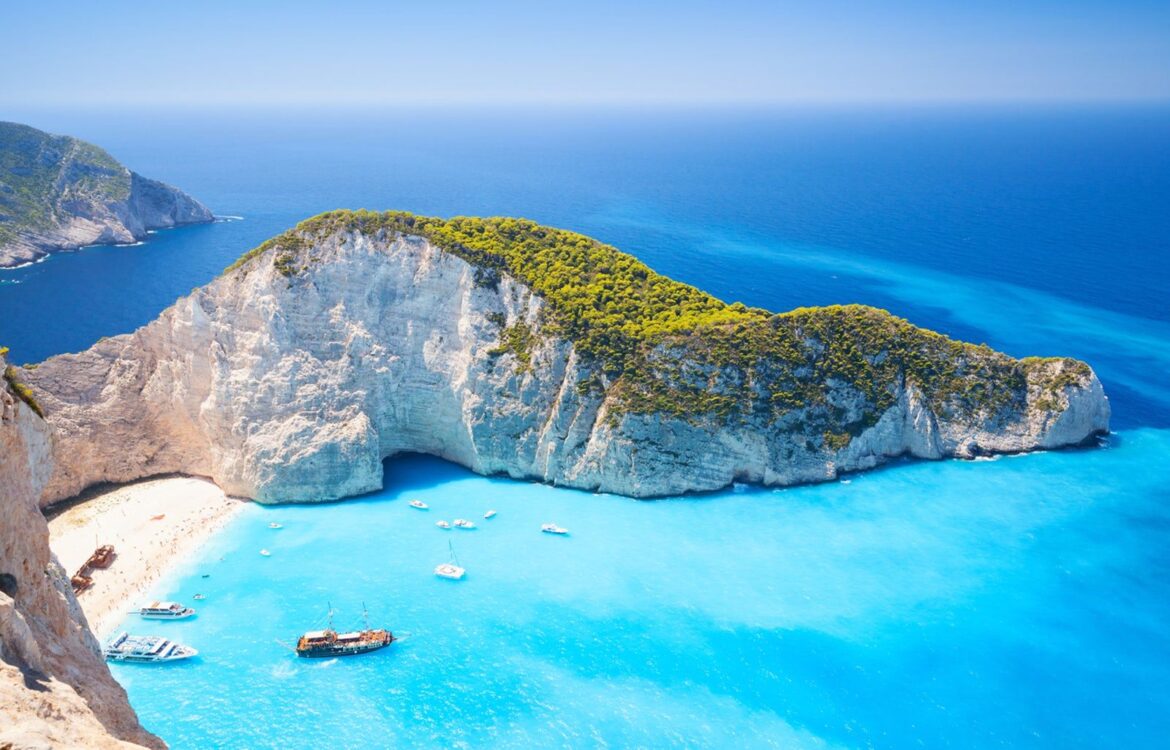Few places on Earth capture the imagination like the Greek Islands. Scattered like pearls across the Aegean and Ionian Seas, these islands have long enchanted travelers with their sun-drenched landscapes, turquoise waters, whitewashed villages, and echoes of ancient myths. Whether one seeks romance, adventure, history, or serenity, Greece’s islands offer a world of diversity and timeless beauty — each with its own story to tell.
A Mosaic of Islands
Greece boasts more than 6,000 islands and islets, though only about 200 are inhabited. They are divided into several distinct groups, each with its unique character:
The Cyclades, famous for postcard-perfect white houses and blue domes.
The Dodecanese, close to Turkey, rich in medieval history.
The Ionian Islands, lush and green, influenced by Venetian culture.
The Sporades and North Aegean Islands, tranquil and less crowded.
And the Crete, the largest island, a world of its own blending mountains, beaches, and legends.
Santorini: The Icon of Romance
No island is more iconic than Santorini. Born from a volcanic eruption thousands of years ago, it now rises dramatically from the sea, with villages clinging to its cliffs. The sunsets of Oia, painting the caldera in fiery hues of orange and gold, are among the most photographed in the world.
Santorini’s charm goes beyond its scenery: ancient ruins at Akrotiri, often called the “Minoan Pompeii,” reveal a sophisticated Bronze Age civilization buried under volcanic ash. Visitors can also explore the island’s unique vineyards, producing crisp Assyrtiko wines from volcanic soil, or relax on beaches of red, black, and white sand.
Mykonos: The Island of Energy
If Santorini is romance, Mykonos is rhythm. Known for its cosmopolitan nightlife, Mykonos combines chic beach clubs and luxury resorts with traditional Cycladic charm. The maze-like streets of Mykonos Town (Chora) are lined with boutique shops, art galleries, and lively bars.
But Mykonos also has a quieter side. Early mornings reveal peaceful windmills and fishing boats bobbing in Little Venice, while nearby Delos, a UNESCO World Heritage Site, offers an unforgettable journey through ancient Greek mythology — said to be the birthplace of Apollo and Artemis.
Crete: The Island of Legends
The largest of the Greek Islands, Crete, is a destination that feels like a country of its own. Its landscapes range from snow-capped mountains to hidden gorges and endless beaches. The island is steeped in myth — it was here, according to legend, that Zeus was born, and where the Minotaur roamed the Labyrinth of Knossos.
Travelers can visit the Palace of Knossos, explore the vibrant city of Heraklion, or wander through the charming harbors of Chania and Rethymno, where Venetian and Ottoman influences blend seamlessly.
For nature lovers, hiking the Samaria Gorge, one of Europe’s longest canyons, is a must. Meanwhile, the Elafonissi Beach, with its pink-tinted sand and shallow turquoise waters, offers one of the most stunning natural sights in the Mediterranean.
Rhodes and the Dodecanese
Farther east, the Dodecanese Islands tell stories of knights, empires, and seafaring power. Rhodes, the largest of the group, was once home to one of the Seven Wonders of the Ancient World — the Colossus of Rhodes. Today, its Medieval Old Town, a UNESCO site, is one of the best-preserved in Europe. Walking through its cobbled streets feels like traveling back in time, with grand stone walls and towers built by the Knights of St. John.
Nearby islands like Kos, Patmos, and Symi offer peaceful alternatives. Patmos holds deep spiritual significance as the place where St. John is said to have written the Book of Revelation, while Symi enchants visitors with pastel-colored neoclassical houses climbing up from its harbor.
The Ionian Islands: Green Serenity
On the western side of Greece, the Ionian Islands reveal a different face — greener, lusher, and shaped by Venetian heritage. Corfu, with its olive groves, fortresses, and elegant mansions, reflects centuries of European influence. The Old Town of Corfu, another UNESCO site, brims with charm and history.
Zakynthos, meanwhile, offers one of Greece’s most photographed beaches — Navagio (Shipwreck Beach) — where a rusted ship rests dramatically between towering white cliffs and blue waters. The island is also a nesting site for the endangered loggerhead sea turtle, a symbol of environmental protection in Greece.
Life on the Islands
Beyond their beauty, what unites the Greek Islands is a sense of philoxenia — the ancient Greek concept of hospitality. Whether in a luxury resort or a small family-run inn, travelers are greeted with warmth and generosity. Evenings often begin with a glass of ouzo and end with laughter, music, and dancing under the stars.
The cuisine of the islands is simple yet unforgettable: fresh fish grilled with olive oil and lemon, creamy feta, tomatoes bursting with flavor, and local specialties like dakos, moussaka, or baklava. Meals are meant to be shared, savored, and celebrated.
When to Visit
The best time to explore the Greek Islands is between May and October, when the weather is warm and the sea inviting. July and August bring lively crowds, while May, June, September, and early October offer a perfect balance of sunshine and serenity.
The Spirit of the Aegean
Each island in Greece offers its own rhythm — some vibrant and glamorous, others quiet and timeless. Yet together they form the heart of Greek identity, where myth, sea, and light intertwine. To sail among these islands is to trace the paths of ancient heroes, poets, and explorers, discovering along the way that paradise is not a single place — but a constellation of islands floating in an endless blue.


